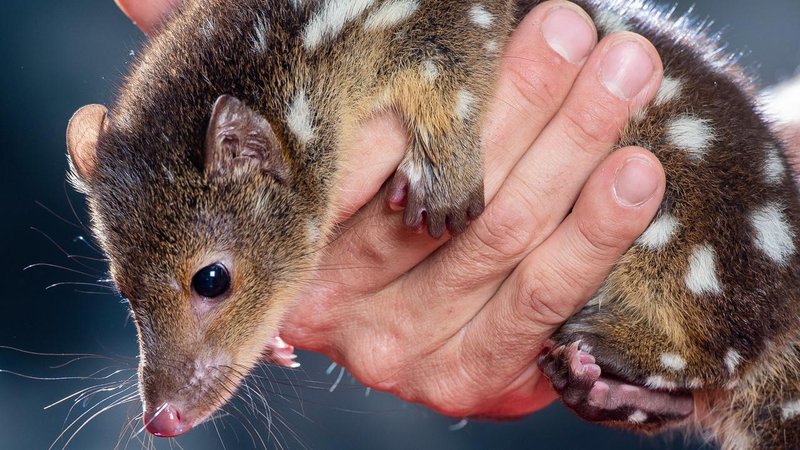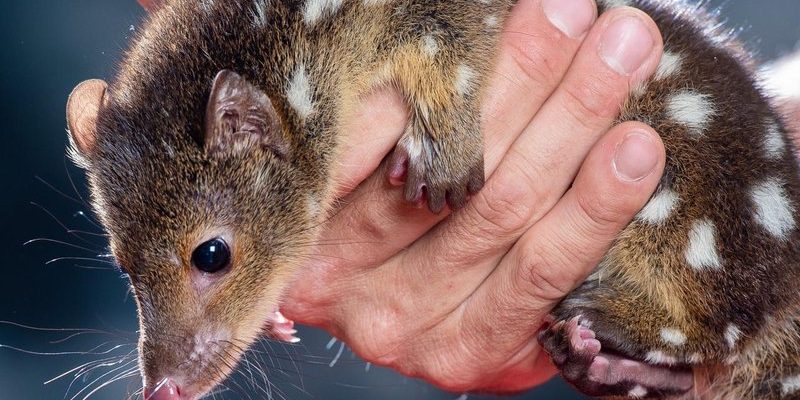
Quolls are often underestimated in the animal kingdom, but they have remarkable adaptations that make them agile hunters. Understanding their diet is crucial, not just for conservation efforts, but for appreciating the balance of nature in which they exist. You might be wondering, what exactly do quolls eat? How do they hunt? Let me explain how these little powerhouses find their meals and why it matters.
Quolls are opportunistic feeders, which means they aren’t picky eaters. Their diet mainly consists of a variety of foods that they can find in their habitats. Here’s what you might find on a quoll’s plate:
- Insects: Quolls love to munch on insects like beetles and crickets. These crunchy little critters are not only abundant but also packed with protein.
- Small mammals: Quolls have a taste for small rodents such as mice and even rabbits. Catching a quick snack like this involves stealth and speed.
- Birds: If the opportunity arises, a quoll will go for a bird’s nest. They can climb trees to find these tasty treats.
- Fruits and vegetables: Surprisingly, quolls also enjoy some plant matter. They might nibble on berries or other fruits when meat is scarce.
So, why does their diet matter? Well, quolls help control the populations of these small animals, which can, in turn, prevent overpopulation and maintain a healthy ecosystem balance. They are like little furry nature’s managers!
When it comes to hunting, quolls have some impressive tricks up their sleeves. They rely on their keen senses and agility to catch their meals. Here’s how they do it:
First off, quolls have an incredible sense of smell, much like a dog. This helps them detect the scent of prey from a distance. Imagine being able to sniff out a delicious meal like a fresh pizza from blocks away—that’s the quoll for you!
Next, they’re masters of stealth. Quolls can move quietly through the underbrush, taking slow, careful steps to avoid alarming their prey. It’s like playing a game of hide-and-seek in the forest, where they’re both the hunter and the hider.
Finally, quolls can be quite athletic. They’re agile climbers and can leap quite a distance, which comes in handy when chasing down agile prey. Imagine a sprinter taking off at the sound of a starting gun—that’s the burst of energy a quoll exhibits when it pounces on its target!
Time of Day: When Quolls Hunt
You might be surprised to learn that quolls are mostly nocturnal. This means they come alive at night, making the most of the darkness to hunt. Here’s why this is beneficial for them:
- Less competition: At night, quolls face fewer predators and competitors, making it safer to forage.
- Active prey: Many of their favorite prey, such as insects and small mammals, are also more active at night, allowing for easier hunting.
- Better cover: Hunting under the cover of darkness allows quolls to use their stealthy skills without being easily spotted.
You could say that nighttime is when quolls truly shine! They’ve adapted to this lifestyle over generations, making it a key part of how they survive.
Habitat: Where Quolls Live and Hunt
The quoll’s habitat greatly influences its hunting habits and diet. These little marsupials can be found in various environments, from dense forests to open woodlands and even rocky areas. Here’s what you should know about where they thrive:
Quolls prefer areas with plenty of cover and places to hide. Think of it as living in a cozy neighborhood, where there are lots of trees and underbrush for safety. These hiding spots are crucial for both hunting and avoiding predators.
Additionally, the availability of food in their habitat impacts their diet. In lush areas with abundant foliage, you might find more insects and small mammals, which fuels their high-energy hunts.
Climate also plays a role; quolls need specific temperatures to remain healthy. In some regions, they adapt to seasonal changes by adjusting their hunting strategies. It’s similar to how we might change our wardrobe with the seasons—quolls are flexible, too!
The Role of Quolls in Their Ecosystem
Understanding the quoll’s diet and hunting strategies gives us a glimpse into their role in the ecosystem. Quolls are essential for maintaining the health of their environments. Here’s why they matter:
- Natural pest control: By keeping populations of rodents and insects in check, quolls help prevent overgrazing and crop damage, benefiting plants and other wildlife.
- Food sources for larger predators: Quolls serve as a food source for larger carnivores. They’re part of the food chain, contributing to the balance of wildlife populations.
- Indicator species: Their health reflects the condition of their environment. If quoll populations decline, it signals potential problems in the ecosystem.
In this way, quolls play a role that extends far beyond their adorable appearance. They are vital components of a well-functioning ecosystem!
Conservation Efforts for Quolls
Sadly, quolls face threats from habitat loss and competition with introduced species like cats and foxes. But conservation efforts are underway to protect these unique creatures. Here’s how we can help:
Preserving their natural habitats is crucial. Conservation groups work to create wildlife corridors that allow quolls to move safely between areas. It’s like building a highway just for them, ensuring they can find food and mates without running into trouble!
Education and awareness are also key. By learning more about quolls and their role in the ecosystem, people can support initiatives that protect them. Imagine you’re at a party where everyone is talking about their favorite animals—you’d want to share the quoll’s story, right?
Finally, researchers are studying quoll populations to understand their behaviors better. This information helps to create effective conservation strategies. With the right knowledge and action, we can ensure that future generations will get to see these marvelous marsupials in the wild!
In conclusion, quolls are incredible little creatures with fascinating diets and effective hunting strategies. They help maintain balance in their ecosystems while showcasing the intricate web of life. By understanding and supporting these unique marsupials, we can contribute to their survival and the overall health of our natural world. So the next time you think about wildlife, consider the quoll—small but mighty!

